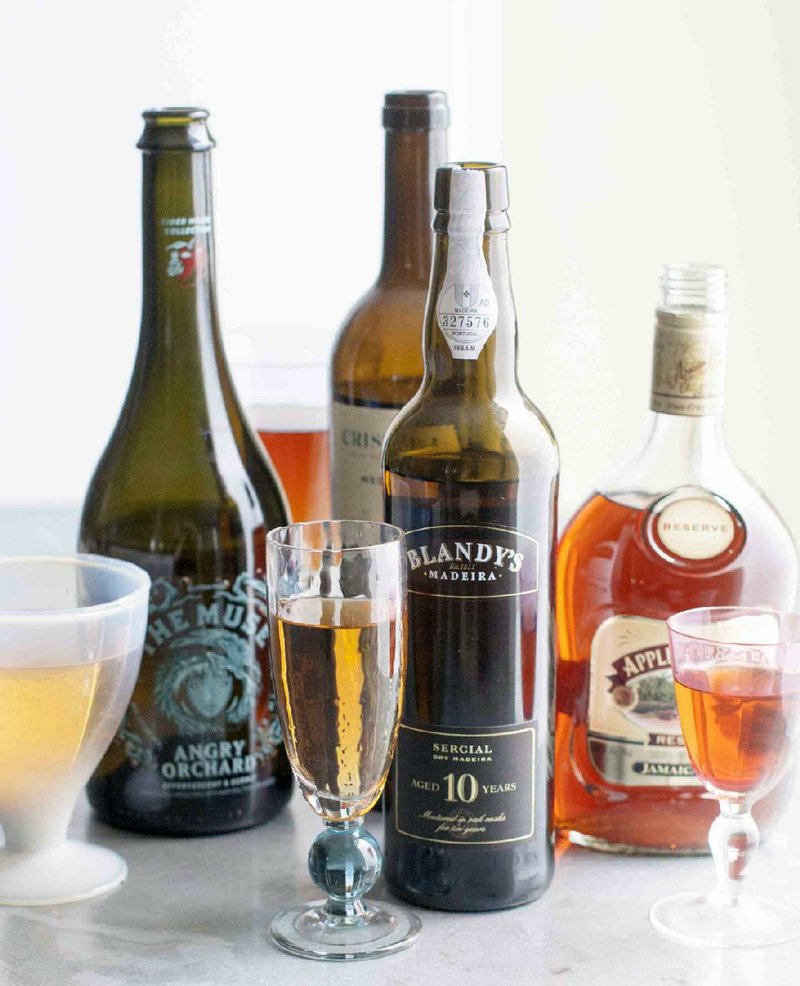You know George Washington and John Hancock as Founding Fathers. But what about George Washington, successful whiskey distiller? Or John Hancock, wine importer?
Turns out some of that patriot spirit came in bottles.
"I was surprised at how much people drank," says Corin Hirsch, who chronicled the drinking habits of Colonial-era Americans in her recently released book Forgotten Drinks of Colonial New England: From Flips and Rattle-Skulls to Switchel and Spruce Beer.
"People were starting their days with alcohol and ending their days with alcohol," Hirsch says. "It was woven into the culture in fundamental ways."
Take John Adams, second president of the United States and father of the sixth, who started each day with a tankard of cider. Adams also served as attorney for Hancock, who got into a kerfuffle in 1768 when the British seized his sloop, the Liberty, in Boston Harbor, claiming -- charges that didn't stick -- that Hancock had avoided paying duties on most of his shipment of Madeira, a fortified wine.
Madeira made sense as a New World drink because it developed its character through being exposed to heat and sloshing around in barrels at sea. Sherry, also fortified, was also popular.
The one thing Colonials weren't likely to drink was water, considered a very dubious beverage.
Where there are spirits there must be mixology. A simple Colonial cocktail was rum dropped into cider, known as a Stone Wall or Stone Fence, Hirsch says.
"Flip" was the artisanal cocktail of the day, generally a mix of beer, rum, eggs, spices, sometimes cream, served warm and blended by being poured from one pitcher to another until creamy and silky. To finish, a hot poker was plunged in, imparting a charred flavor and creating a froth and steam on par with today's bartending pyrotechnics.
Beer was the drink of the early immigrants. One of the reasons the Mayflower landed in Massachusetts rather than continuing south was because beer was running low, notes David Sipes, cider maker at Angry Orchard.
But Colonists didn't have much success raising barley to make beer, so they turned to apples, which did grow well, and made hard cider. Alcohol levels were probably fairly low, in the 4 percent to 5 percent range, Sipes says.
Today's ciders are a bit different. Angry Orchard, for instance, uses a mix of regular apples, known as culinary apples, and traditional cider (bittersweet) apples and clocks in anywhere from 5 percent to 10 percent alcohol.
If you're looking for a sparkler to break open on July 4, Angry Orchard has a new cider called The Muse, inspired by slightly sweet sparkling wines, which is made from apples from Italy and France, comes in a cork-caged bottle and is just under 8 percent alcohol.
On the hard liquor side, Americans turned away from rum after the Revolution and domestic whiskey production increased, says Steve Bashore, manager of trades at the distillery and gristmill site of Mount Vernon, Washington's estate in Virginia.
Most farmers had at least a small still and some made larger quantities. Washington got into the business in 1797 when he returned from the presidency and hired farm manager James Anderson, a Scottish immigrant with extensive distilling experience.
Washington had all the ingredients for the whiskey business, including a water-powered grist mill and cooperage. He started with two stills in the cooperage, later built a distillery and by 1799 production was 11,000 gallons, likely the largest U.S. distillery of the time, Bashore says.
An astute businessman, Washington "ran a pretty tight ship at Mount Vernon," Bashore says, and the tradition continues today with workers at the estate making whiskey the old-fashioned way in small batches from grain ground at the mill, all done by hand, including carrying water by bucket.
The research team worked through the ledgers from 1798 and 1799 noting the types of grain delivered to the distillery to develop the recipes -- or "mash bill" -- for Washington's whiskey, which is 60 percent rye, 35 percent corn and 5 percent malted barley. About half the whiskey is unaged, or "white" whiskey, as it would have been in Washington's time, and the rest is barrel-aged, with all bottles available only through in-person purchase at the estate.
The latest batch of aged George Washington Straight Rye Whiskey will go on sale over the July Fourth weekend.
Style on 07/01/2014
